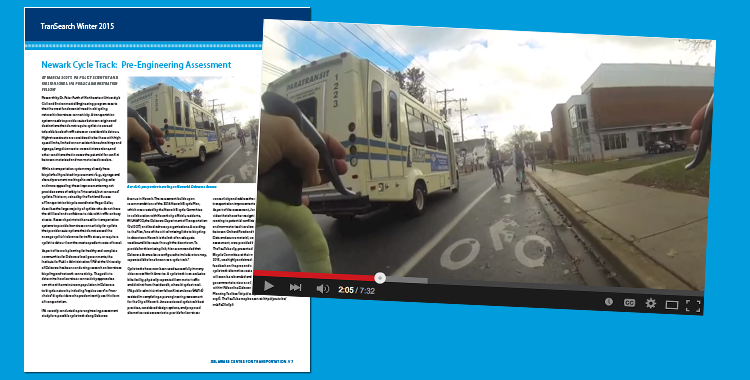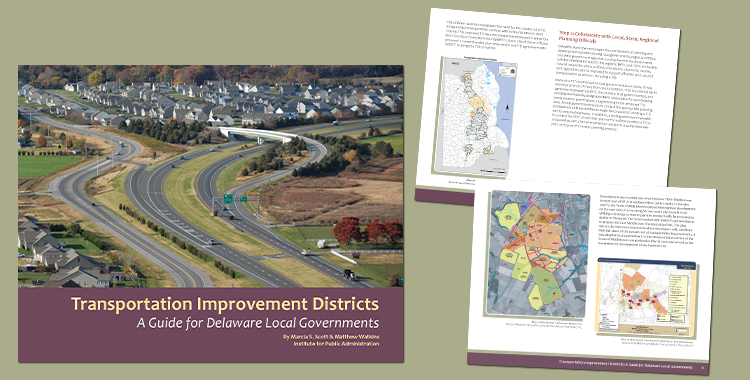by Sarah Marshall Pragg | Mar 10, 2017 | News, Toolbox
IPA Policy Scientist Marcia Scott and Public Administration fellow Savannah Edwards (MPA ’17) presented a poster at the 96th Annual Meeting of the Transportation Research Board (TRB) in Washington, D.C. on January 9 and 10, 2017. TRB Session 697, “Current Issues in...
by Sarah Marshall Pragg | Mar 10, 2017 | News, Toolbox
Delaware’s municipalities are increasingly being asked to focus much of their attention on the state’s expected new growth and development. Municipalities must make difficult decisions that can have long-lasting impacts on the community’s character, economy, and...

by Sarah Marshall Pragg | Feb 27, 2015 | News, Toolbox
IPA recently conducted a pre-engineering assessment study for a possible cycle track along Delaware Avenue in Newark. The assessment builds upon recommendations of the 2014 Newark Bicycle Plan, which was created by the Newark Bicycle Committee in collaboration with...

by Sarah Marshall Pragg | Feb 27, 2015 | News, Toolbox
To help Delaware local governments better understand DelDOT regulations that govern the process to plan for and establish a TID, the Institute for Public Administration developed an electronic publication, Transportation Improvement Districts: A Guide for Delaware...
by Sarah Marshall Pragg | Mar 19, 2013 | News
A new study from the Center for Neighborhood Technology affirms that homes located near public transportation maintain their property values better than homes without transit access. The study found that residential property values hold their value 42 percent better...



